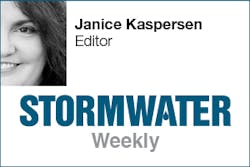
Against the odds, a mother in the Midway Islands has welcomed a new offspring, believed to be her 40th. The mom’s name is Wisdom, and she’s a Laysan albatross. She was given an aluminum leg tag in 1956 by a US Geological Survey biologist, and she’s estimated to be at least 65 years old—twice the average age for members of her species. Female birds of most other species become infertile late in life, but scientists have been monitoring Wisdom since 2001, when she was rediscovered and identified by her leg tag, and she’s hatched at least four chicks since then.
What’s notable about this albatross, besides her advanced age and tremendous reproductive success, is the fact that albatrosses on the whole aren’t faring nearly so well. There are 21 species of albatross, and 19 of those are threatened or endangered. That’s partly because of long-line fishing practices—the birds snap up the bait and get hooked—and partly because of the often-discussed problem of plastics in the oceans. Scientists estimate albatross chicks ingest 5 tons of plastic each year—fed to them by their parents, who mistake the debris for food—and many of those chicks die from malnutrition and dehydration as a result.
As we’ve covered before—here, for example—plastic debris is a growing problem. We add about 20 million tons of it to our waters each year, some of it transported there in stormwater runoff. A few years ago, researchers at the University of Delaware showed that the oceans contain up to two and a half times more plastic than previously thought, because it not only floats on the surface, but also is abundant at depths of 20 meters or more, where we hadn’t been measuring.
Plastic doesn’t biodegrade, but it does break down into smaller pieces that are easily ingested by birds, fish, and other animals, and it gets into the human food chain as well. Microbeads—tiny bits of plastic used in personal care products like exfoliants and toothpaste—are a more recent concern; they aren’t removed by wastewater treatment plants. Laura Sanchez, the editor of our sister publication Water Efficiency, recently wrote about the problem here.
This Los Angeles Times article reports that oysters, which filter seawater to trap food like algae and phytoplankton, take in the similarly sized bits of plastic along with everything else and must expend so much energy trying unsuccessfully to digest it that they’re not reproducing as quickly. That’s bad news not just for the oysters, but also for the increasing number of projects that are using newly established oyster reefs to curb coastal erosion. An ecologist quoted in the article says, “I am wondering when the bivalves will decide to go on strike for better working conditions when you consider all the things we throw at them in our estuaries.”
In 2008 California became the first state to ban products containing microbeads, and the US House of Representatives has now adopted a similar ban that will go into effect in 2017.
As for Wisdom the albatross and her new chick, you can read more in this Washington Post article.
About the Author
Janice Kaspersen
Janice Kaspersen is the former editor of Erosion Control and Stormwater magazines.

